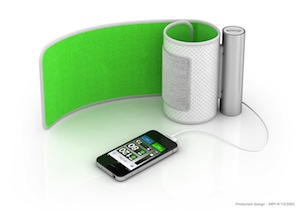
Download an app, upload your blood pressure.
Health care is a major driver of booming mobile data traffic. The growth in machine-to-machine (M2M) communications means we’re nearly in a world with more mobile data accounts than people, and networked medical devices, wearable and otherwise, are a principal reason.
In the same five years that’ll see a billion and a half M2M devices added to global networks, just the number of U.S. patients receiving being monitored remotely will grow to 1.3 million, according to projections just released by IMS Research.
According to the company, the U.S. will lead the telehealth market worldwide, primarily because it’s a way to contain costs, but also because of the impending implementation of Obamacare. That’s why they’re predicting a 55% increase in telehealth spending in the U.S. during 2013.
Applications include remote analysis services, electronic monitoring as a substitute for hospitalisation, routine monitoring of chronic or potential conditions, remote assessment of immediate problems – e.g. should you go to the emergency room or not – and consultation by teleconferencing instead of via in-person visits to clinics. Estimated savings begin at $1,000 per annually and climb from there.
Some things – teleconferencing, for example – can be done over a home Internet connection, but even then mobile devices and networks could have an advantage. Quality control is a core requirement of any medical service, and mobile devices and apps are more easily installed, maintained and controlled by third parties such as health care providers.
Even something as simple as a thermometer could be difficult to set up and calibrate properly on a home computer. Bespoke devices can be locked in at the factory and even if something has to installed on a patient’s own mobile phone, it can be done at the doctor’s office.
All the data generated will have to be sent back and forth on mobile networks. That’s a key reason total traffic is set to grow 70% a year for the next five years.
